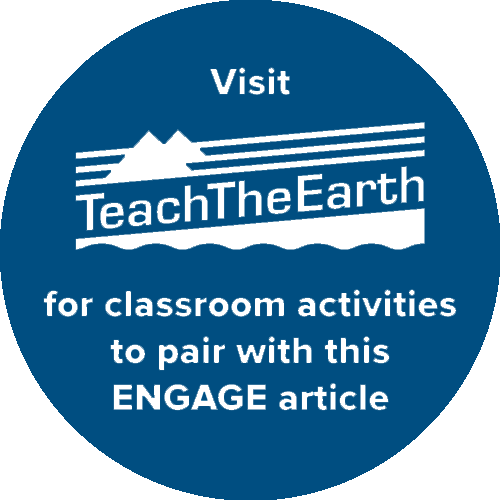In the search for extraterrestrial life, scientists are looking in some pretty unusual places. Now, a new study reveals that some exoplanets orbiting red dwarfs may potentially support life in the zone of near twilight between the planet’s dayside and nightside. The results were presented at AGU’s Fall Meeting 2022 and were published recently in The Astrophysical Journal. The finding could widen the search for habitable planets in the universe.
“Habitable planets won’t necessarily be habitable everywhere on their surface, but rather could have habitable regions,” said Ana Lobo, a postdoctoral researcher at the University of California, Irvine, and lead author of the study.
Stuck in the Middle
Red dwarf or M dwarf stars are common, making up about 70% of stars in the Milky Way. Because they are smaller and dimmer than the Sun, their habitable zone is closer than that of stars like our Sun.
Since 1995, more than 5,000 exoplanets have been discovered. In January, NASA’s James Webb Space Telescope (JWST) detected its first rocky Earth-like exoplanet circling a red dwarf star, eliciting much excitement about its potential to host life.
Because of strong gravitational forces, exoplanets in M dwarf habitable zones often rotate at the same rate they orbit their host stars. The condition, called tidal locking, causes these planets to have a permanent dayside (the side facing the star) and nightside (the side away from the star).
The daysides are too hot for life as we know it, and the nightsides are too cold. But the narrow transition between light and dark—the terminator zone—may be at just the right temperature for water to flow, an essential condition for life as we know it.
“This concept of terminator habitability is not new,” noted Rory Barnes, an astrophysicist at the University of Washington who wasn’t part of the research. “That said, this work is a significant upgrade.”
Lobo and her colleagues used a global climate model to simulate conditions on Earth-like exoplanets orbiting M dwarf stars. They explored both ocean-covered planets and water-limited planets, adjusting rotation rates and the distance between planets and their stars.
Using the model, the researchers showed for the first time that terminators could sustain life on water-limited planets but not ocean worlds. A marked contrast in dayside and nightside temperatures is essential to a habitable terminator, according to the researchers.
“This study helps astronomers and astrobiologists find life among the stars.”
Water-rich planets lack this characteristic because heat in their atmospheres is efficiently transported from one side to the other, resulting in a more homogeneous climate and, at best, a meager difference in dayside and nightside temperatures.
Incoming stellar radiation on these ocean-covered planets heats the water on the dayside, turning it into water vapor, a greenhouse gas. A thick layer of water vapor traps heat, driving a runaway greenhouse effect wherein the entire planet is too hot for life.
On the other hand, the atmospheres of water-limited planets are less effective at moving heat, thus favoring a temperate climate at the terminator. Somewhere between too hot and too cold is just right.
“Planets with terminator habitability are a great illustration of how a wide range of climates can coexist on a planet,” Lobo said.
“As humanity seeks to understand its place in the universe, it’s intrinsically valuable to know what may or may not be different between Earth and other types of habitable worlds,” Barnes observed. “This study helps astronomers and astrobiologists find life among the stars.” Knowing just where to look for life can help scientists make better use of telescope time, he added.
A Twist in the Terminator Tale
Intriguingly, the study shows that ocean-covered worlds might eventually transition into water-limited planets with terminator habitability. Water that evaporates on the dayside on water-rich planets is transported to the nightside, where it precipitates out as snow and forms large glaciers, trapping water on the nightside. Over time, the dayside would become drier, the researchers said.
“I think that’s a really interesting prediction,” said Stephen Kane, a planetary astrophysicist at the University of California, Riverside, who wasn’t involved in the study. “It creates a very self-consistent picture, which I like, and that’ll be something we’ll be able to test.” With the JWST making ever more advanced measurements, scientists are inching closer to detailing the atmospheres of exoplanets, he added.
The study’s findings open the door to a whole new class of planets that astronomers can search for signs of life, Lobo said. “It’s an exciting change in direction.”
“The terminator habitability concept sounds so unusual, but I just love this idea of having everything on the table as a possibility,” Kane said.
—Alakananda Dasgupta (@AlakanandaDasg1), Science Writer
This news article is included in our ENGAGE resource for educators seeking science news for their classroom lessons. Browse all ENGAGE articles, and share with your fellow educators how you integrated the article into an activity in the comments section below.


